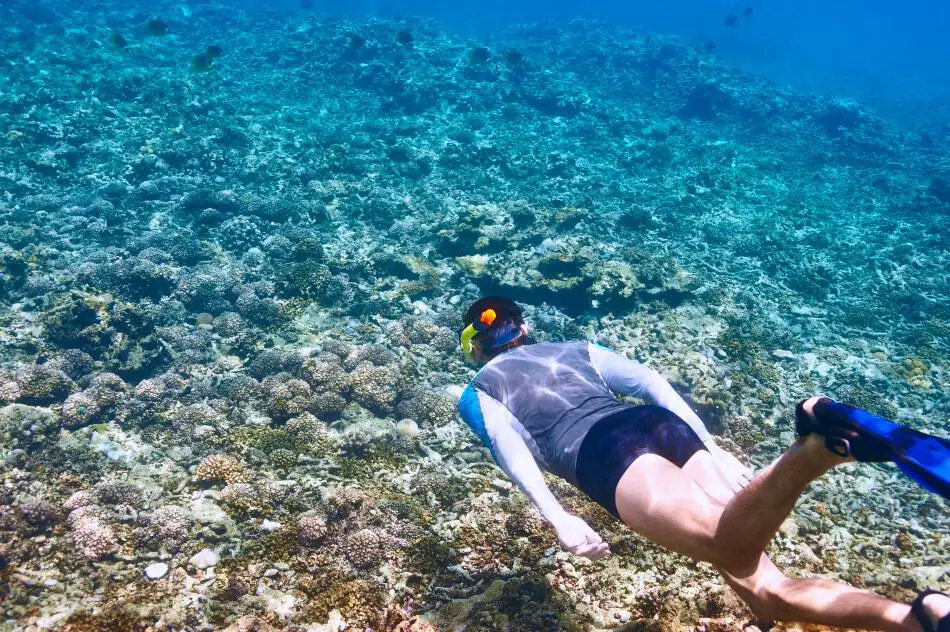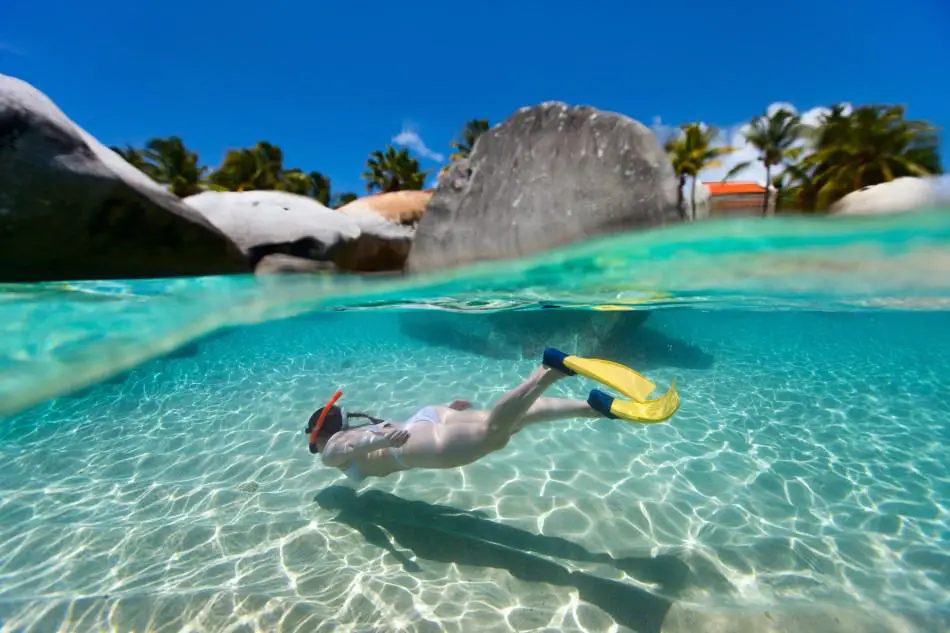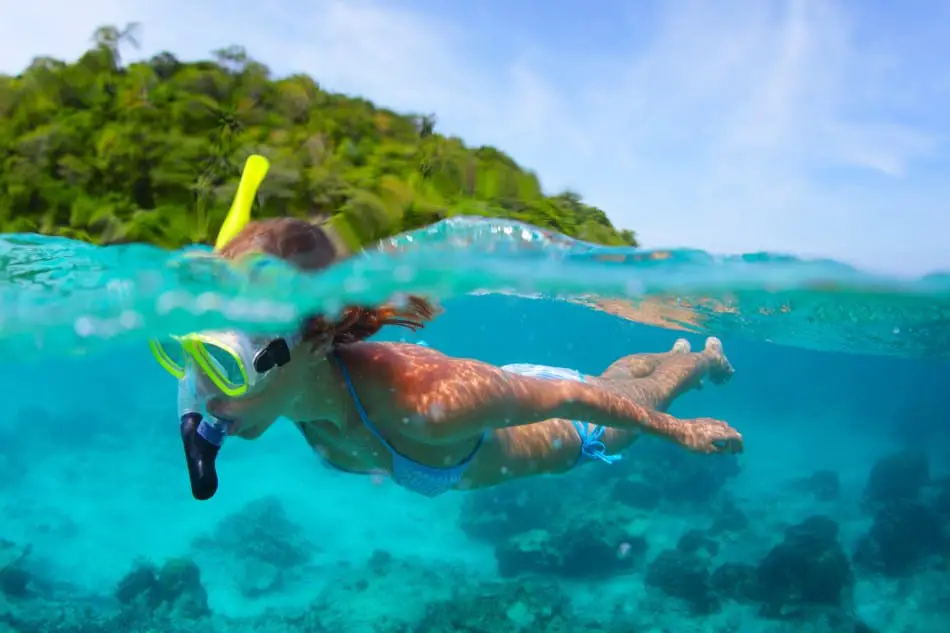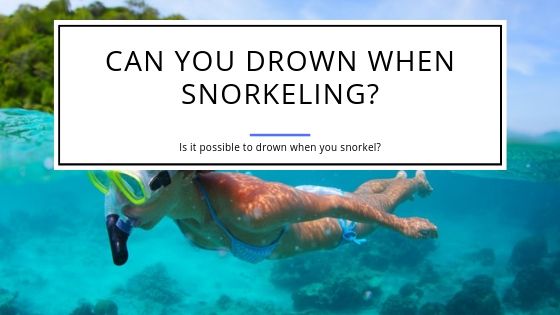Can You Drown When Snorkeling?
Snorkeling is a great activity for kids and adults alike. But as with any water activity, there are always some safety measures you have to observe. Everyone knows that you need to have a snorkel mask, tube, vest and flippers on when you enter the water.
Can you drown when snorkeling? Yes, you can. It’s not common that it would happen but being in the water always entails the risk of drowning. Most accidents do happen when the snorkeler gets exhausted from either being in the water too long or fighting currents. Staying within your physical limitations reduces such a risk significantly!
Over time, the varieties of masks and snorkel tubes have grown to cater to different types of snorkelers. This has also led to the use of full-face snorkel masks, which eliminate the use of a separate tube entirely. But these seemingly useful masks have been associated with several deaths of snorkelers – Considering Buying a Full Face Snorkel Mask?
This leads to the all-important question: are snorkelers at a risk of drowning, and if so, how?
Can You Drown While Snorkeling?
Over the years, there have been many reported cases (and many undocumented ones) of people who drowned while they were snorkeling. Since the activity does not really involve going deep into the water, it is often hard to understand how this is possible. There are a number of ways a snorkeler can be at risk of drowning:
Rip Tides
Essentially, a rip tide is a strong water current that pulls away from the shore, and if you’re stuck in one, it’ll drag you along with it.
If you’re a recreational snorkeler, you are probably not well acquainted with the tides and how quickly they can change. It doesn’t matter if you’re snorkeling close to the shore. You might have only been four feet deep in the water, but a sudden rip tide can drag you out into the depths of the ocean and take away your last breaths within a matter of minutes.
Rip tides have very strong water currents, which even the best swimmers might find hard to fight against. One way to potentially save yourself is to look for coral or a big rock and hold on to it very tight till the current passes. Even is this case, chances are you might not be able to hold on long or strong enough.
The best way to avoid the danger of getting sucked into rip tides is to:
- Inform an instructor or snorkel guide about your whereabouts so they may keep an eye out and warn you of any sudden changes in the water current.
- Check the forecasts before planning a snorkeling trip. Low tide is ideal for snorkelers. You can check the water tide online or through various weather apps. One such option is Tide-Forecast.com.
Avoid snorkeling when the wind speed is high since this can also reduce your visibility and create a greater risk of drowning.

Full-Face Snorkel Masks
Tropical locations, such as Hawaii are popular vacation spots for snorkelers. While the place might be beautiful, there have been a few reported cases of drowning during snorkeling.
Of these, many of the tragedies have been attributed to full-face snorkel masks. While many new designs of snorkel tubes and masks (like the Ocean Reef Aria Full Face Snorkel Mask) are meant to keep water out, they can also unintentionally choke a snorkeler.
Full-face snorkels can cause the buildup of exhaled carbon dioxide inside due to a lack of ventilation. With no fresh air and oxygen to breathe in, snorkelers may start to suffocate.
It initially starts out as a slight amount of discomfort while breathing. If the mask is removed and the diver breathes in fresh air, they’ll be fine. If the feeling of discomfort continues, the snorkeler will start to suffocate and may be unable to breathe.
Some researchers also suggest that carbon dioxide buildup is a possibility in regular snorkel masks as well and that the real cause of drowning is panic. Amateur snorkelers and first-timers may start to hyperventilate and run out of breath.
The research on whether full-face snorkel masks are dangerous for divers or not is still ongoing. The leading such masks are all considered safe for use when snorkeling (like the Wildhorn Outfitters Seaview 180° V2 mask or also the SeeReef Full Face Snorkel Mask). We would caution the use of cheap no-name versions that are not sufficiently tested for the CO2 build-up within the mask.
Check out the best snorkel sets! They come with all the pieces of gear you need to start snorkeling!
However, in the meantime, some ways to avoid drowning while snorkeling are to:
- Research the type of full snorkel mask you’re buying. Tried, tested and renowned manufacturers are ideal. Some people also say that full-face masks are harder to remove in cases of emergency. However, these masks are great if you have claustrophobia or are anxious as they provide a wider field of view and give the impression of more space around you.
- If you’re a first-time snorkeler or someone who has a tendency to panic when they get in the water, it is better to get some practice sessions before going into the ocean. There are also segmented areas set up by professional snorkelers and instructors for beginners. Once you feel more comfortable, you’re ready to go out at sea.
- Don’t panic. Anxiety is a major cause of drowning as it leads to hyperventilation, shortage of breath and eventually, silence.

Dry Drowning When Snorkeling
Dry drowning isn’t caused by choking in water. It is caused when you either swallow or inhale water in a way that it causes your vocal cords to spasm and prevent air from getting into your lungs.
For snorkelers, this may be possible either because of some water that may get into their snorkel tube or by accidentally taking in some sea water.
Sudden muscular paralysis can also lead to dry drowning in snorkelers. Dry drowning is characterized by breathing difficulties and a feeling of exhaustion due to the reduced oxygen intake.
If any of these symptoms are experienced, it is essential to get the snorkeler to a hospital or paramedic immediately. It should be treated as an emergency case because if it persists, it can lead to swelling in the brain. The longer the symptoms remain, the greater the damage and the higher the chance of a person dying.
Is Snorkeling Dangerous?
The simple answer is that no, snorkeling is not dangerous. You’re close to the surface, you have a snorkel vest on, and you don’t even need to know how to swim to snorkel. However, there are some key safety precautions that need to be taken to stay safe.
Safety Precautions When Snorkeling
- Snorkelers need to be very comfortable in the water. Panic and stress can lead to ultimately fatal accidents.
- Snorkelers need to be comfortable with the equipment they are using. This means knowing how to use their snorkel tube properly (to prevent water from getting in) or having a well-adjusted mask if they’re using a full one.
- Snorkelers should be accompanied by a snorkeling buddy to help them out in case of emergencies.
- Snorkelers should only go in waters that are safe and not known for frequent and dangerous rip tides.
- Snorkelers should be aware of any potentially harmful sea creatures they need to look out for when they’re in the water.

You’re All Set to Snorkel
With the right equipment and safety measures, snorkeling is a safe activity for anyone. It is important to remember that at no point should a diver be overconfident and swim too far out or go too deep in the water. Water currents are unpredictable.

